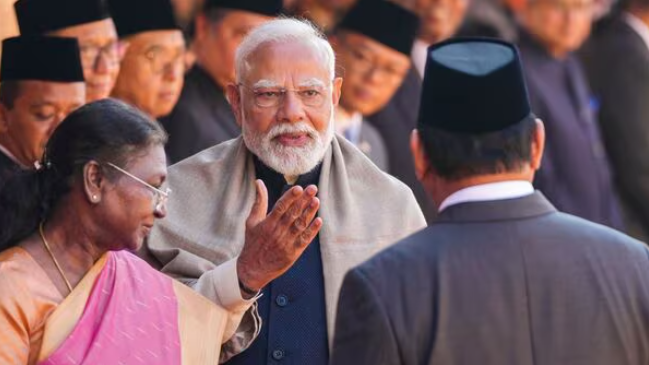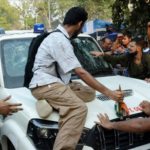1. Introduction: President Droupadi Murmu Advocates for ‘One Nation, One Election’
President Droupadi Murmu recently expressed strong support for the concept of “One Nation, One Election,” highlighting its potential to address policy paralysis and streamline the electoral process. This proposition, a longstanding point of discussion in Indian political circles, envisions synchronizing elections for the Lok Sabha (Parliament) and State Assemblies to ensure uniformity and efficiency in governance.
The President’s endorsement during her address at a public forum underscores the growing momentum for this reform. Supporters argue that this approach can mitigate the frequent disruptions caused by elections, reduce public expenditure, and enable governments to focus on long-term policy-making. However, detractors raise concerns about its feasibility, impact on federalism, and logistical challenges.
This article delves into the benefits, challenges, and implications of the “One Nation, One Election” proposal, as envisioned by President Murmu.
2. The Concept of ‘One Nation, One Election’
The idea of simultaneous elections is not new in India. It was practiced during the early years after independence, with elections for the Lok Sabha and State Assemblies held concurrently in 1952, 1957, 1962, and 1967. However, political instability and the premature dissolution of some state assemblies disrupted this harmony.
The “One Nation, One Election” concept advocates for aligning the election schedule for the Lok Sabha and all State Assemblies, ensuring that voters across India head to the polls simultaneously or within a short, defined timeframe. This would not only streamline governance but also minimize the time and resources spent on continuous election cycles.
3. President Droupadi Murmu’s Views on the Proposal
In her address, President Murmu emphasized the necessity of structural electoral reforms to prevent policy paralysis. She argued that frequent elections lead to governance disruptions, as officials, politicians, and the bureaucracy often shift their focus to campaign-related activities instead of developmental programs.
Key points from her speech include:
- Policy Paralysis: President Murmu highlighted that governments at both the central and state levels face repeated election pressures, making it difficult to implement long-term policies. A unified electoral calendar would allow administrations to work uninterrupted on developmental objectives.
- Cost Efficiency: The financial burden of conducting multiple elections every year is significant. Aligning elections, she asserted, could drastically reduce the expenditure borne by taxpayers.
- Strengthened Democratic Process: A synchronized electoral process could bolster voter participation and allow citizens to evaluate governance holistically rather than through fragmented polling events.
 For the more information click on this link
For the more information click on this link
4. Benefits of ‘One Nation, One Election’
The proposal offers several advantages that align with President Murmu’s vision:
4.1. Reduced Financial Burden
Conducting elections in a country as vast as India is an expensive affair. The Election Commission deploys enormous resources, including security personnel, polling officers, and electronic voting machines (EVMs), across the country. A single electoral cycle would significantly cut down on these recurring costs.
4.2. Minimizing Disruptions to Governance
Frequent elections result in the enforcement of the Model Code of Conduct (MCC), President Droupadi Murmu which halts developmental activities and policy implementation. This pause in governance hampers the momentum of ongoing projects and delays decision-making.
4.3. Enhanced Voter Engagement
A unified election schedule could generate greater voter interest and participation. Instead of repeated trips to polling stations for different elections, President Droupadi Murmu citizens could exercise their franchise in a single comprehensive event.
4.4. Administrative Efficiency
Simultaneous elections would reduce the administrative burden on the Election Commission, President Droupadi Murmu enabling it to deploy its resources more efficiently. It would also facilitate better coordination among security agencies and election officials.
4.5. Political Stability
The synchronization of elections might promote stable governments. With fixed terms for both the central and state governments, President Droupadi Murmu policymakers would have a clear timeframe to execute their agendas without fear of mid-term electoral disruptions.
5. Challenges and Concerns
While the concept has numerous merits, it also faces significant challenges:
5.1. Constitutional and Legal Hurdles
The Indian Constitution provides provisions for separate elections to the Lok Sabha and State Assemblies. Achieving simultaneous elections would require amendments to the Constitution, particularly Articles 83, 85, 172, and 174, among others. These amendments would need broad political consensus, President Droupadi Murmu which can be challenging in a diverse democracy like India.
5.2. Impact on Federalism
Critics argue that simultaneous elections could undermine the federal structure by overshadowing regional issues with national agendas. States may struggle to articulate their unique concerns during a synchronized election dominated by central government narratives.
5.3. Logistical Challenges
Conducting simultaneous elections for the entire nation would demand unprecedented logistical preparation. From ensuring adequate polling booths to managing voter turnout, President Droupadi Murmu the Election Commission would face immense pressure to deliver flawless execution.
5.4. Impact of Premature Dissolution
One of the biggest challenges is handling situations where a state assembly or the Lok Sabha is dissolved before completing its term. Aligning the new elections with the existing schedule would require innovative mechanisms.
5.5. Political Resistance
The proposal has faced resistance from several opposition parties, President Droupadi Murmu which view it as a move to centralize power. Smaller and regional parties argue that “One Nation, One Election” could dilute their influence and reduce the focus on regional issues.
6. Steps Toward Implementing the Proposal
Implementing “One Nation, One Election” would require a multi-pronged approach:
- Formation of Committees: Establishing expert panels to study the feasibility and address constitutional, logistical, and legal challenges.
- Public Consultation: Engaging stakeholders, President Droupadi Murmu including political parties, civil society, and voters, to gather input and build consensus.
- Pilot Programs: Conducting test runs in selected regions to evaluate the effectiveness of the proposed framework.
- Legislative Action: Introducing and passing constitutional amendments in Parliament, followed by ratification by at least half of the state legislatures.
7. Public Opinion and Debate
The idea of simultaneous elections has garnered mixed reactions from the public. Proponents argue that it would lead to cleaner, more focused governance, President Droupadi Murmu while opponents worry about the erosion of federalism and regional representation.
A recent survey indicated that a significant portion of citizens favor the proposal, President Droupadi Murmu primarily due to its cost-saving potential. However, others expressed concerns about practical execution and the marginalization of regional voices.
8. International Examples of Simultaneous Elections
Several countries, including South Africa, Sweden, and Indonesia, conduct simultaneous national and regional elections. These nations benefit from streamlined electoral processes, President Droupadi Murmu reduced costs, and efficient governance. India could draw lessons from their experiences to tailor the framework to its unique democratic setup.  For the more information click on this link
For the more information click on this link
9. The Road Ahead: Achieving Consensus
President Murmu’s endorsement of “One Nation, One Election” has reignited discussions on its feasibility. For the proposal to succeed, President Droupadi Murmu it must overcome political divisions and address legitimate concerns raised by critics. The government will need to facilitate transparent dialogue and ensure that the plan respects India’s diversity and democratic ethos.
Prime Minister Narendra Modi has also voiced support for the idea, President Droupadi Murmu emphasizing the need to modernize India’s electoral system. With both the President and the Prime Minister championing the cause, the concept has gained significant political backing.
10. Conclusion: A Vision for Unified Governance
President Droupadi Murmu’s advocacy for “One Nation, One Election” reflects her commitment to fostering stability, efficiency, and transparency in governance. While the proposal promises transformative changes, it also necessitates careful planning and collaboration among stakeholders.
The debate over “One Nation, One Election” transcends political partisanship, touching upon fundamental questions about the nature of Indian democracy. If implemented effectively, President Droupadi Murmu it could redefine the way India conducts elections, promoting a governance model that is both efficient and inclusive. ALSO READ:- The Growing Tensions Between China and U.S. Politicians 2025





